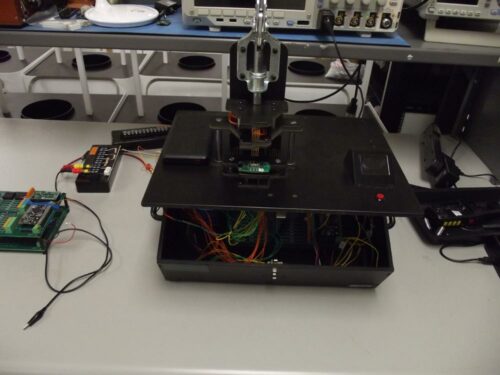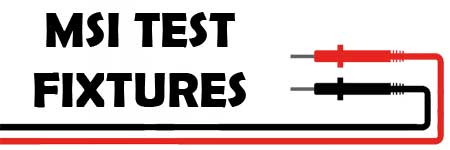 A wireless test fixture is a specialized testing tool designed to assess the functionality, performance, and quality of wireless communication components, modules, or devices, without the need for physical connections or wired interfaces. These fixtures are used to test and validate the wireless capabilities of products such as Bluetooth devices, Wi-Fi modules, cellular communication devices, and other wireless-enabled electronics.
A wireless test fixture is a specialized testing tool designed to assess the functionality, performance, and quality of wireless communication components, modules, or devices, without the need for physical connections or wired interfaces. These fixtures are used to test and validate the wireless capabilities of products such as Bluetooth devices, Wi-Fi modules, cellular communication devices, and other wireless-enabled electronics.
Key features and aspects of a wireless test fixture include:
1. Wireless Connectivity: The fixture incorporates wireless communication capabilities, allowing it to establish a wireless connection with the device under test (DUT).
2. Compatibility: Wireless test fixtures can support various wireless communication protocols, such as Wi-Fi, Bluetooth, Zigbee, NFC, RFID, cellular standards (e.g., 4G, 5G), and more.
3. Non-Intrusive Testing: Wireless test fixtures enable non-intrusive testing by establishing communication without requiring physical connectors or soldered connections on the DUT.
4. Functional Testing: These fixtures can perform functional testing to assess the wireless communication performance, signal quality, range, data throughput, and other relevant metrics.
5. Performance Analysis: Wireless test fixtures can capture and analyze key performance indicators (KPIs), such as signal strength, signal-to-noise ratio (SNR), bit error rate (BER), and latency.
6. Protocol Conformance: Wireless test fixture can be used for protocol conformance testing to ensure that the DUT adheres to specific wireless communication standards and specifications.
7. Interoperability Testing: The fixture can evaluate the DUT’s compatibility and interoperability with other wireless devices and networks.
8. Antenna Testing: Wireless test fixtures often include provisions for testing the performance of antennas, including radiation pattern, efficiency, and impedance matching.
9. Regulatory Compliance: Wireless test fixtures may assist in verifying compliance with regulatory standards and requirements, ensuring that the DUT meets emission and interference limits.
10. Automated Testing: Many wireless test fixtures are designed for automated testing, allowing for repeatable and consistent testing procedures.
11. Real-World Simulation: Some advanced wireless test fixtures can simulate real-world wireless scenarios, including interference, noise, and fading, to evaluate how the DUT performs in challenging conditions.
12. Prototype Testing: Wireless test fixtures are beneficial during product development and prototyping stages, helping engineers validate wireless features before mass production.
Wireless test fixture is an essential tool in the development, manufacturing, and quality assurance of wireless-enabled electronic devices. They play a critical role in ensuring that these devices can reliably establish wireless connections, communicate effectively, and meet the performance expectations of end-users.
